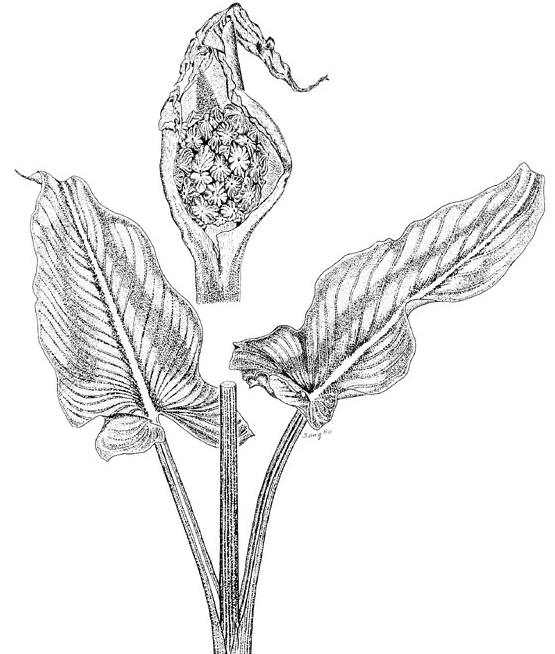
|
The calla lily has many adaptations that make it a very durable and tough plant. The genus Zantedeschia is known for it's plants that have large spathes and arrow shaped flowers. However the species aethiopica is known for it's large leaves as well. The leaves themselves can grow to 16 inches (40cm) which are by far the largest in the genus. This adaptation in the species has allowed it to grow larger because it can undergo more photosynthesis, by doing this it not only is more successful, but can out compete smaller plants. Another example of an adaptation is the growing season of the calla lily. The plant is naturally found as a swamp plant. In the summer as the weather gets hotter and hotter the plant "rests" so to speak and only the rhizome survives. The plant uses the seasons to its advantage and it is part of the reason it is very successful. The plant is not well adapted for summer weather, but it has an adaptation that allows it to survive through intense summer conditions. The calla lily is a very unique flower in regards to the spathe, unlike most plants it's spathe is very large and it's flowers are very very small. The spathe offers protection to the flowers and to the fruit until it withers away which is not until the fruit is fully developed. Drawing of the parts of the Calla Lily, easy to see the wilting and protection of the Spathe The leaves of the calla lily are very well adapted to survive in wet conditions. They have stomata that can discharge the excess water through guttation. The calla lily has a very advanced system that allows them to never "drown" so to speak even though they live in very wet areas.
This page is maintained by Ashley Schultz schultz.ash2@students.uwlax.edu
|
